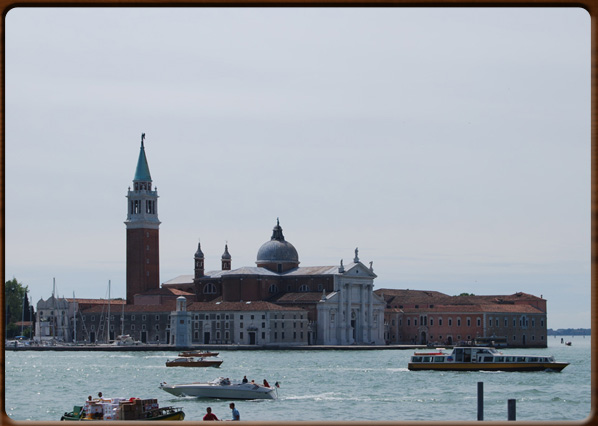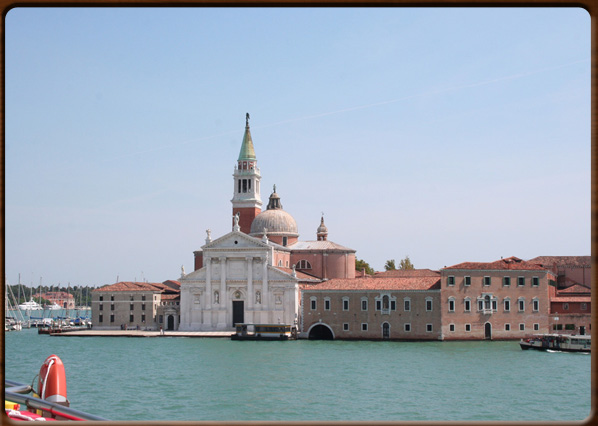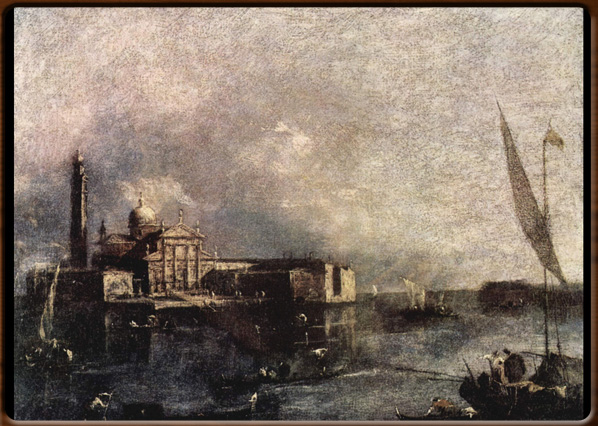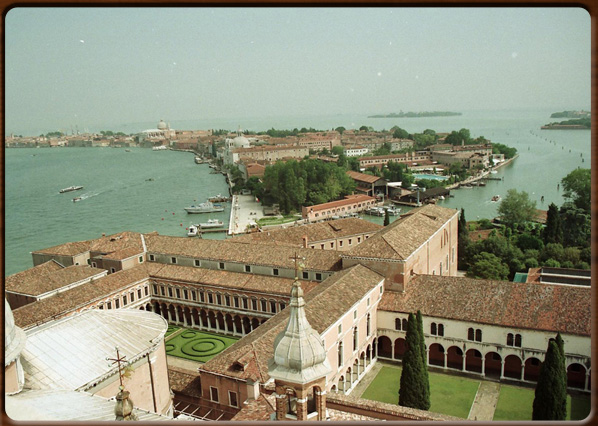
The island as seen from Canal Grande.

The Basilica of San Giorgio Maggiore.

The island of San Giorgio, 1760 ca., F. Guardi, Galleria Estense Modena.

The Monastry as seen from the Basilica tower-bell.




No video
The island of San Giorgio Maggiore, together with Giudecca, marks the southern-most boundary of the city of Venice on the lagoon.
In ancient times there were orchards and vineyards, a mill, a salt-works and a small wooden church (8th Century).
It used to be called the Isola dei Cipressi or Isola Memmia, after the family of Doge Memmo who donated it to the Benedictine Order in 982.
Giovanni Morosini, head of the Order, had a monastery built here, which over the course of the centuries became one of the most important Benedictine monasteries in Italy, especially on account of the collection of works of art it gradually built up.
In 1800 Pope Pius VII was elected here, when the conclave was held on this island instead of in Rome because the French were at the time threatening the Papal State.
Then, during the Napoleonic period, the monastery was suppressed (1807) and the island became a military stronghold, continuing to be used in this way during the period of Austrian occupation and the Kingdom of Italy.
In 1951 the Italian Government granted the use of the monastery buildings and adjacent areas to the Fondazione Giorgio Cini, which undertook major restoration works and now uses the complex for cultural activities, training and research programmes.
In 1954 the “Teatro Verde” opened: a large structure reminiscent of the classical ancient amphitheatres and the “teatri di verzura” of the villas of Veneto.
400 - 1000 - ISOLE - rev. 0.1.6